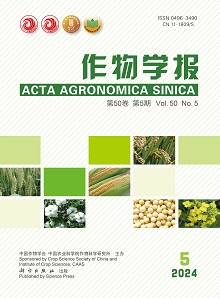Seasonal drought during winter and spring often occurs in southwest hilly area of China, which severely influences seedling standing and yield in winter wheat. In this study, we conducted a two-year field experiment in Jianyang, Sichuan province in the 2012–2013 (dry) and 2013–2014 (wet) growing seasons to explore the effects of straw mulching on physiological characteristics, water use efficiency (WUE), and grain yield of winter wheat. Four treatments were designed, namely non-mulching (CK), non-mulching plus two irrigations after sowing and at jointing stage (T1), straw mulching before sowing (T2), and straw mulching before sowing and during wheat growth (T3). In the dry year (2012–2013), the yields of T1, T2, and T3 were 4151, 3926, and 3603 kg ha-1, which were 41.96%, 34.25%, and 23.22% higher than those of CK, respectively, and the WUEs of T1, T2, and T3 increased by 27.23%, 29.59%, and 18.84%, respectively. However, in the wet year (2013–2014), the yield variation among treatments was slight. In the dry year, irrigation or straw mulching showed the effects on enhancing dry matter accumulation from sowing to anthesis and inhibiting SPAD attenuation of flag leaf and penultimate leaf after anthesis and straw mulching increased soil moisture content in pre-sowing and whole growing period. Compared with CK, T2 significantly increased root dry matter, root-to-shoot ratio, root length density, root dry matter density, and root surface area density in some critical growth stages, and highly enhanced root system in deep soil. According to correlation analysis, grain yield was positively correlated with dry matter accumulations in the periods of sowing–tillering, tillering–jointing, jointing–anthesis, and anthesis–maturity, SPAD values of flag and penultimate leaf after anthesis, and WUE. These results indicate that straw mulch before wheat sowing can maintain soil moisture, delay leaf senescence and increase grain yield in winter wheat.

 WeChat
WeChat
 WeChat
WeChat